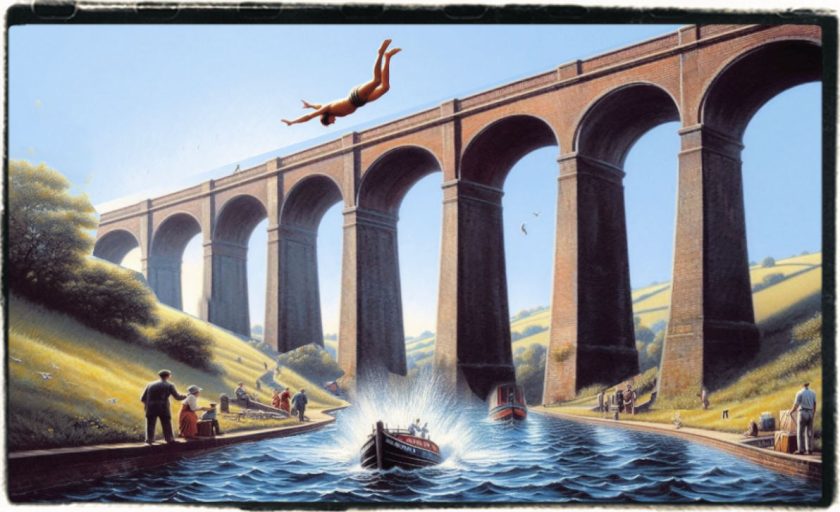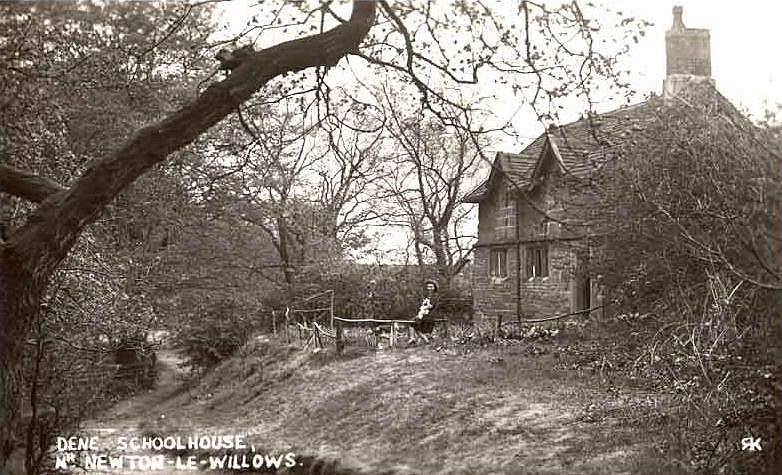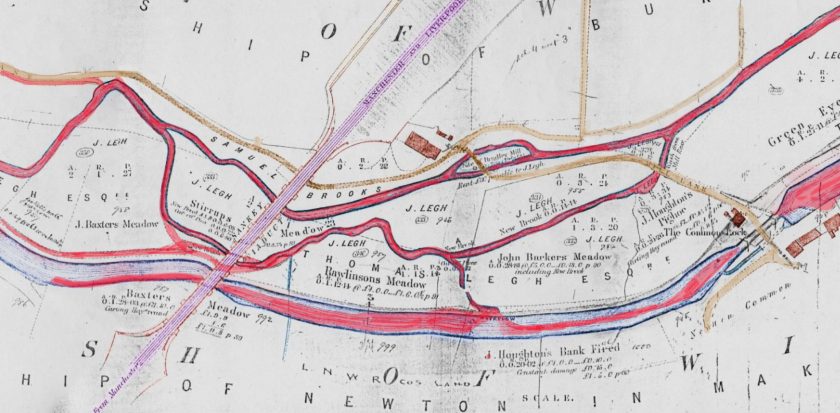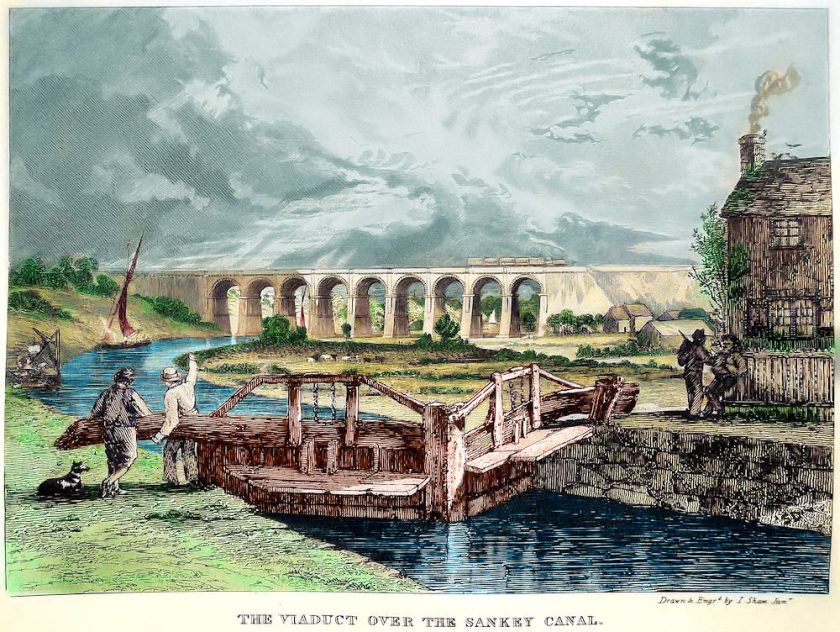TOMMY BURNS’ ATTEMPTED DIVE: Completed by local Collier.
Newton and Earlestown Guardian – Friday 13 November 1891
The inhabitants of Earlestown, Newton and surrounding district were considerably moved last week end by the startling announcement that Tommy Burns, the champion diver, who has gained such notoriety around Liverpool, Runcorn and district by his swimming and diving feats, would dive off the Viaduct Bridge or “Nine Arches,” on Saturday afternoon at three o’clock.
The bridge is nearly 70 feet high, while the water in the canal is only about seven feet deep, and to the minds of most people it was a highly dangerous performance.
Tommy was on view for several days at some of the public houses in the district, notably the Prince of Wales Hotel, and early on Saturday afternoon people flocked from all quarters to the salubrious banks of the canal and Sankey Brook to witness the sensational feat.
By three o’clock something like four thousand people were to be seen about the neighbourhood of the canal, eagerly discussing the possibility and probability of the feat being performed.
It soon became known that the police had received instructions to prevent Burns carrying out his intention, a company’s detective and four officers, together with a number of plate layers having possession of the bridge, while several constables were stationed along the canal side. Still the people came, and the tow path was Boon crowded from the Ship Inn right past the Sugar Works. Nothing happened until half-past
Sugar Works. Nothing happened until half-past three, and the crowd were beginning to make up their minds that the attempt would not be made, when suddenly a struggle was seen to be taking place at the Burtonwood end of the viaduct.
It proved to be Burns struggling with the police. P.C.’s Middleton and Wilson, who were stationed at that end, noticed men moving among the trees by the side of the railway, and called Sergeant Longworth and Detective Atkinson’s attention to it. After considerable mancavering one of them darted forward on to the line, but was met by Sergeant Longworth who recognised Burns.
He was partly disguised, having some clothes on which were far too big, with wadding stuffed in the back of his coat to make him appear like an old man.
Sergeant Longworth told him he would not be allowed to go on the bridge, when he said “Don’t rob a fellow of a bit of bread and butter,” and commenced struggling with the officer.
P.C. Middleton went to his assistance and Burns was escorted across the bridge and along the line to the police station. It turns out that he was nearly drunk, and so was locked up on the charges of being drunk and disorderly and trespassing on the railway.
After this the crowd began to dwindle away, but when the police and railway authorities had cleared off, a man in the crowd stated his determination to perform the feat, and he accordingly mounted the bridge and getting on the ledge by the side of the parapet wall launched off the bridge downwards towards the canal.
He travelled part of the distance all right, but gradually became flat, and just before he reached the water put his head up, and immediately struck the water full on his face.
The splash caused by his falling so flat upon the water was tremendous, and the force of the concussion on his face and chest knocked nearly all the wind out of him, so that he was unable to get out of the water, although he rose to the top almost immediately.
He was promptly assisted out, and carried shoulder high for some distance along the tow path in the direction of the Ship Inn, a collection being taken along the route for him. He came in for an ovation, and stated that he did not feel much worse for the leap.
His face, however, quickly commenced to swell, and he suffered considerably from his eyes, which were open when he struck the water. His name first went forth as Jack “the Dyver”, he was a collier working at the local Collieries, but his proper name proved to be Jack Dempsey, living at Pocket Nook, between Haydock and St. Helens.
His face and other parts of his body were so much swollen that on Saturday night he visited Dr. Patterson’s surgery, but his injuries were in no way serious.
He stated that the greatest dive he had previously performed was off Gerard’s Bridge, on the L. and N. W. Railway bridge which crosses Carr Mill Dam, and is about 30 feet high.
He was to be seen in Earlestown on Sunday, where he met Burns (who was liberated on bail late on Saturday night) and stated his willingness to dive with him at any time.
During this week Burns has been performing diving feats in different parts of the country, and is bound down to appear on Saturday next at Newton Petty Sessions for his trespass and drunkenness charge.



